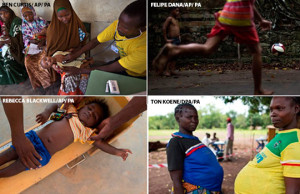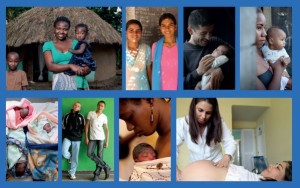 Global health experts warn that societies are failing women, children, and adolescents, particularly in the poorest communities around the world, and urgent action is needed to save lives and improve health.
Global health experts warn that societies are failing women, children, and adolescents, particularly in the poorest communities around the world, and urgent action is needed to save lives and improve health.
Our special cluster of 16 articles looks at the success or otherwise of millennium development goals 4 and 5 and finds vast inequalities between and within countries.
• Marleen Temmerman and colleagues say we know what needs to be done but we need to push hard now to create a world in which every women, every child, and every adolescent is able to survive, thrive, and transform.
• Building on the unfinished agenda for women’s health, Marleen Temmerman and colleagues elaborate on the actions needed to improve the health and wellbeing of women and girls.
• Wilson Were and colleagues explain why the global community should continue to invest in children’s health.
• Investing in adolescents’ health and development is key to improving their survival and wellbeing, argue Laura Laski and colleagues.
• Doris Chou and colleagues discuss the strategic priorities needed to prevent maternal and newborn deaths and stillbirths and promote maternal and newborn health and wellbeing.
• Investing in early child development is a smart and essential strategy for building human capital, reducing inequities, and promoting sustainable development, argue Bernadette Daelmans and colleagues.
 • Urgent action is needed to tackle malnutrition in all forms and to help nutrition unlock the potential of investment in the health of women, children, and adolescents, say Francesco Branca and colleagues.
• Urgent action is needed to tackle malnutrition in all forms and to help nutrition unlock the potential of investment in the health of women, children, and adolescents, say Francesco Branca and colleagues.
• To achieve goals related to maternal, child, and adolescent health, countries need to integrate targeted interventions within their national health strategies and leverage them into financing, workforce, and monitoring capacity across the system, say James Campbell and colleagues.
• Kumanan Rasanathan and colleagues explain how integrating action on determinants of women’s, children’s, and adolescents’ health into core health strategies is crucial to achieving targets to end preventable deaths and ensure healthy lives.
• By recognising the centrality of human rights, the revised Global Strategy encourages some bold shifts in improving the health and wellbeing of women, children, and adolescents, say Jyoti Sanghera and colleagues.
• Implementing the updated global strategy means effective leadership, requiring country led health plans, partnerships, accountability, advocacy, and collective action at all levels, say C K Mishra and colleagues.
• Innovation is central to reaching the sustainable development goals on women’s, children’s, and adolescents’ health, say Haitham El-Noush and colleagues.
• While global investment in women’s, children’s, and adolescents’ health has increased in recent years, significant gaps remain. Geir Lie and colleagues propose five strategic shifts in financing.
• The worst rates of preventable mortality and morbidity among women, adolescents, and children occur in humanitarian and other crises. Sarah Zeid and colleagues discuss the specific attention that is needed in crises and fragile settings.
• Julian Schweitzer describes the steps taken to ensure accountability in the 2015 Global Strategy and why it is important to success.
• Lori McDougall and colleagues set out a three point agenda for strengthening advocacy.
Jett Aislabie is an assistant editor on bmj.com.